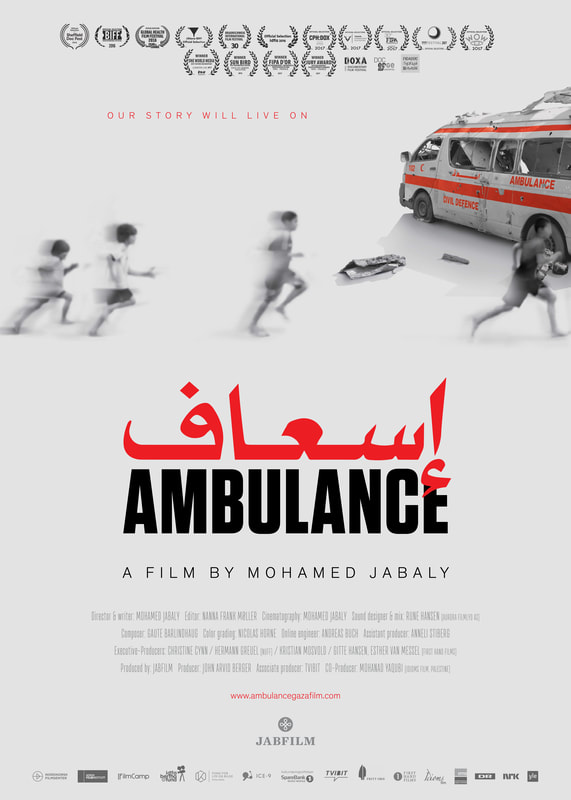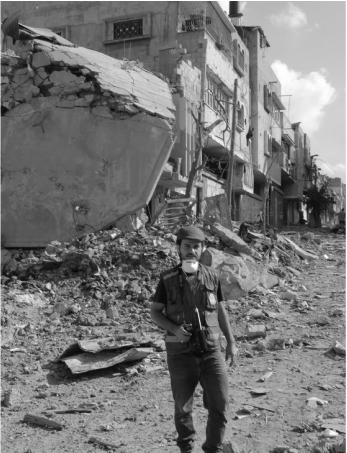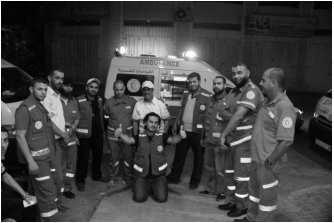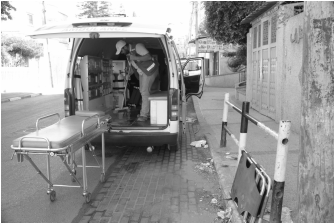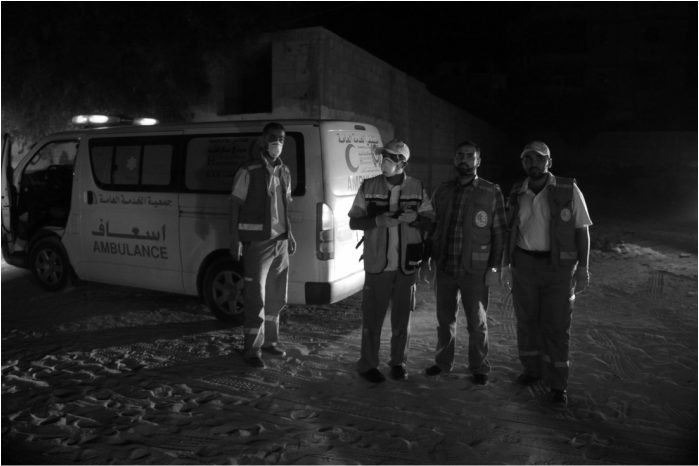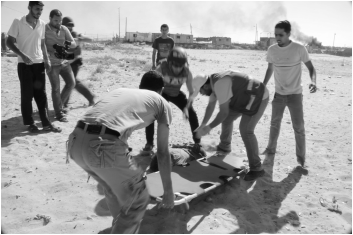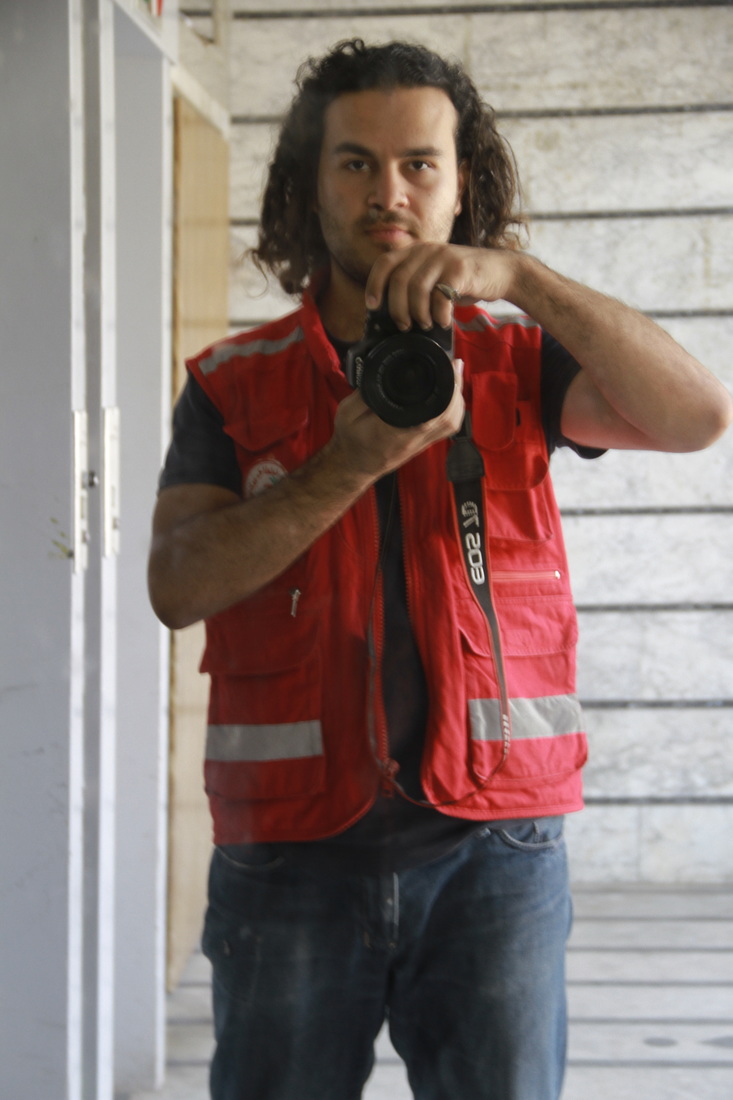Behind the story!
A raw, first-person account of the last war in Gaza in the summer of 2014. Mohamed Jabaly, a young man from Gaza City, joins an ambulance crew as war approaches, looking for his place in a country under siege, where at times there seems to be no foreseeable future. While thousands of things are published on the recurring violence in Gaza, the stories behind them remain hidden. Not this one.
Mohamed Jabaly, 24, aspires to make films in Gaza City, despite the lack of water, electricity, and closed borders that are part of every ‘normal’ day under the 7-year Israeli blockade of Gaza. |
While many young people dream of leaving Gaza, Mohamed wants to help. When he hears the news of a new Israeli offensive on Gaza in July 2014 he decides he cannot merely ‘wait for death’ but must do something and joins an ambulance crew to document the war.
|
Director’s Note
|
The film will be a personal story, as seen through my eyes and the people with whom I’m worked during the war. The film is about human connections and does not seek to campaign for any political party or policy, nor to assign blame. This is not because I don’t see the urgency of the political debate or the importance of accountability, but because I am a storyteller who believes that personal stories can open the way, show us what we have in common- human decency and human dignity.
My war experience was very hard, and I am still trying to work out my deeper feelings. The filmmaking process forces me to do this, and this is a good thing. I came to Norway in October 2014 to participate in a conference and screen some of my short films. Actually I should have been in Norway in earlier but the war prevented me from going. I was supposed to stay only one month, but after only one week Egypt closed the border with Gaza. I went from becoming stuck inside Gaza to being stuck outside Gaza. My Norwegian hosts and friends were very generous and understanding. They also helped me to come out of myself and urged me to make this film. I was thinking of home all the time. I was walking around with the war inside of me. While I was filming the ambulance team, I knew I had to make a film about these days, everybody know that, but I didn’t know when or how I could do this. The ambulance crew asked me again and again, “When will you finish this film? We need to see ourselves, see how we are working during the war”. It’s a heavy responsibility. It also gives me a feeling of pride, that I might also contribute something. The people of Gaza know how hard is is to live a life under constant attack, but not all of the people see the details up close. Few people are really on the front line, close to everything. Even though I myself had lived through 2 wars and 2 Intifada before, nothing prepared me for my experience during the last war. Every phone call was bad news. The next call and the next… it got worse and worse. It could be my family, my neighbours. Our ambulance could be hit at any time. It was the first time in my life to be so close for a situation like this. I started to understand that each TV image is just a small part of a big story. Even though I had lived all my life in Gaza, I was shocked every day, moment to moment. When people in Gaza see this film, I think they too will be shocked. They will be sad, remembering the war and everything they have lost. They will also feel glad that this will be remembered, that no one can say it never happened. No one can erase or deny our pain. The world must remember. Both in Gaza and outside, people will also see how we survive. The film must also remind people we are still alive. We can still smile. We maintain great hope. The best thing about the war was that I gained a new family inside the ambulance crew. I learned what hard work and courage looks like. I felt and received real love. |

